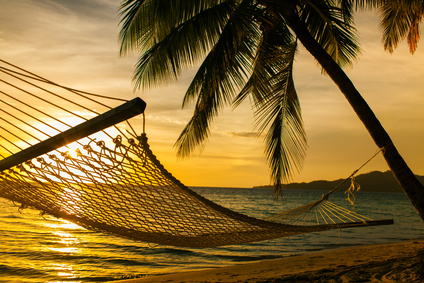 It used to be that backpacking trips to Fiji involved a bus ride from Nadi to Suva, then a ferry to somewhere like Ovalau, Savusavu, Taveuni or Kadavu. No more. These days young budget travelers are lining up to go to the Yasawa Islands, a chain of 16 large volcanic islands and dozens of smaller ones roughly 35 km off the west coast of Viti Levu.
It used to be that backpacking trips to Fiji involved a bus ride from Nadi to Suva, then a ferry to somewhere like Ovalau, Savusavu, Taveuni or Kadavu. No more. These days young budget travelers are lining up to go to the Yasawa Islands, a chain of 16 large volcanic islands and dozens of smaller ones roughly 35 km off the west coast of Viti Levu.
The dazzling white beaches, clear warm waters, colorful coral reefs, and sunny dry climate make the Yasawa Group an ideal tourist destination, but until recently a visit involved a rough sea voyage from Lautoka in an unsafe village boat or an expensive seaplane flight from Nadi. Blue Lagoon Cruises has been plying the Yasawas since the 1950s, but passengers aboard those upscale vessels sleep in staterooms and local residents receive few benefits from their presence.
Until the 1987 Rabuka coups in Suva, it was the policy of the Fiji government that the Yasawas were closed to land-based tourism. The long years of military-backed government brought few changes to the Yasawas, although Australian investors were allowed to construct the deluxe Yasawa Island Resort in 1991 and a couple of village-operated backpacker camps sprang up on Wayasewa and Waya. Since the early 1980s, local families have operated three small low-budget resorts on Tavewa Island, thanks largely to Tavewa’s status as a freehold island beyond the authority of the Fijian chiefs. For decades local church leaders have portrayed tourism as a corrupting outside influence to be kept at arms length from village life.
It would be hard to imagine anything more removed from real Fijian life than Turtle Island Resort on Nanuya Levu Island, Fiji’s ultimate hideaway for the US$1,500-a-night crowd. Nanuya Levu has been freehold land since 1868, and in 1972 Richard Evanson used US$300,000 he earned in the Southern California cable television business to buy the island.
Evanson’s Turtle Island Resort became the prototype of Fiji’s current crop of boutique island resorts, hosting notables like Hollywood stars and millionaires. Brooke Shields stayed here during the 1980 filming of the escapist classic The Blue Lagoon.
A self-styled environmentalist, Evanson has planted thousands of trees on his island, and has converted the mangrove forests into tourist attractions by cleverly creating boardwalks. The resort’s food is grown in organic gardens and power is generated using solar and wind energy. Each year a group of volunteer California eye specialists visits Turtle Island Resort to perform eye surgery on needy villagers or to equip them with donated prescription glasses.
Yet for most Yasawans, life has changed little since 1789 when Captain William Bligh and loyal members of his crew paddled past the group in an open boat shortly after the famous mutiny on the Bounty. Even today, most villages are without electricity or running water, and opportunities for economic development are very limited. The Yasawans have felt neglected by politicians in the distant capital, envious onlookers as mini-cruise ships and yachts carried wealthy foreigners along their shores.
In May 2000, rabble-rouser George Speight and assorted thugs seized the Parliament building in Suva, turning Fiji on its head. Speight’s pro-indigenous rhetoric struck a chord in the Yasawas. Villagers from Nacula Island staged a mini-coup on Turtle Island, locking Evanson in one of his 14 luxurious bungalows as village youths rode wildly around Nanuya Levu on Evanson’s golf carts.
When the excitement died down, plaited mats were spread and kava roots were pounded, and over many bowls of grog, Evanson and the villagers came to an understanding.
Rather than killing the golden goose, Evanson convinced the Nacula people that they’d be better off opening resorts of their own and allowing him to continue running his business in peace.
Evanson offered interest-free construction loans and promotional support, and the Nacula Tikina Tourism Association was born. The association’s currently describes a dozen locally-operated resorts around the Blue Lagoon in the central Yasawas, including the three existing properties on Tavewa. All resort operators must conform to a strict code of conduct intended to preserve the environment and guarantee acceptable levels of service. Though primitive compared to the luxurious Mamanuca resorts off Nadi, the Yasawa backpacker camps provide basic food and accommodations at a relatively low price.
The mass influx of backpackers only began in 2002 when Awesome Adventure, a subsidiary of New Zealand-owned South Sea Cruises, launched a fast catamaran service up and down the chain. You can now depart Nadi’s Denarau Marina on the Yasawa Flyer any morning at 9:15 a.m. and be at the resort of your choice in time for lunch. As many as 150 backpackers do this every day and the village-operated resorts on Kuata, Wayasewa, Waya, Naviti, Tavewa, Nacula, Nanuya Lailai, and Matacawa Levu are booming.
Reservations can be made upon arrival at Nadi Airport through any one of a dozen 24-hour travel agencies right in the airport terminal itself. All of these offices sell catamaran tickets with a bus transfer to the harbor included. Deluxe lodgings and gourmet food should not be expected at any of the Yasawa resorts yet the friendly people, spectacular natural beauty, and low prices make most travelers overlook these inconveniences.
###
David Stanley is the author of Moon Handbooks Fiji.
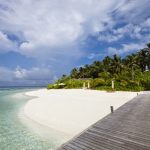

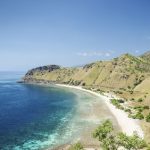
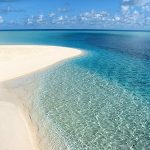
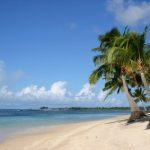
Leave a Reply